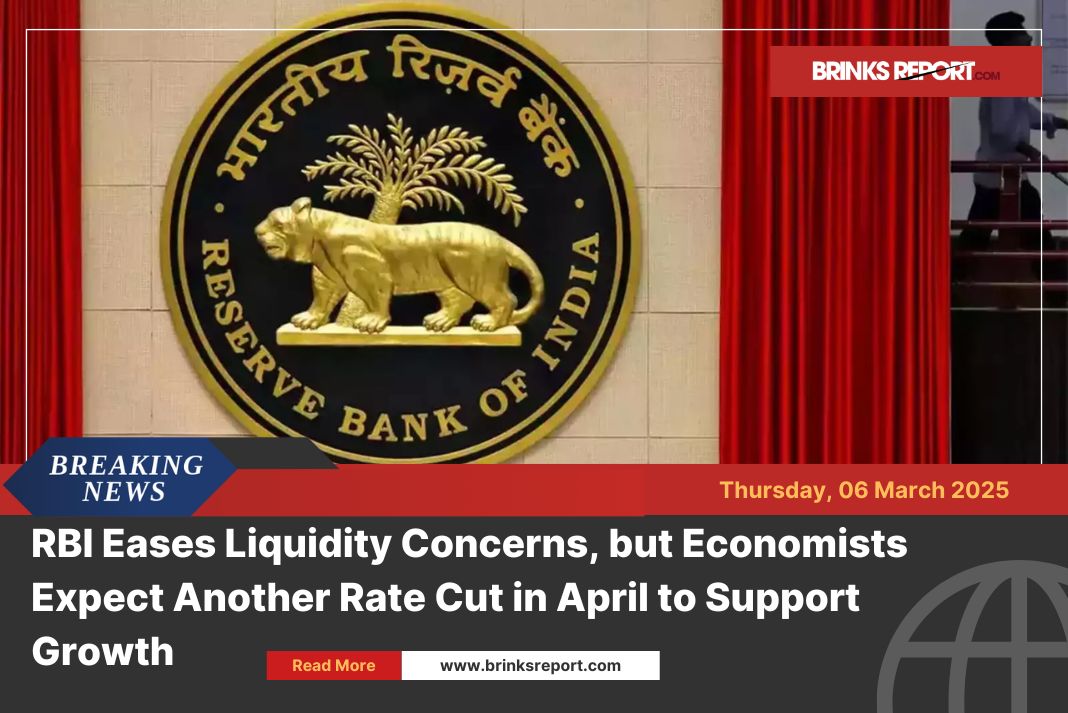
RBI May Cut Interest Rates Again in April to Support the Economy
The Reserve Bank of India (RBI) has been working to ease money flow in the banking system for the past few months by using various tools. However, experts believe that another interest rate cut may happen in April to further reduce borrowing costs, encourage private investment, and boost consumer spending.

Why Another Rate Cut?
Experts say that the previous rate cuts have not been enough to lower borrowing costs significantly. Additionally, inflation is expected to slow down further by April, especially due to a decline in food prices. This gives the RBI more room to reduce interest rates.
Radhika Rao, an economist at DBS Bank, said that India’s economic growth is expected to slow down to around 6% in the financial year 2025, compared to 9% in the previous year. She believes this, along with falling inflation, will allow the RBI to adopt a more relaxed monetary policy and cut interest rates in April.
Ram Singh, an external member of RBI’s Monetary Policy Committee, pointed out that high-interest rates have made businesses more cautious about investing. This has led to a slowdown in the flow of money to the commercial sector.
In February, the RBI reduced the repo rate by 25 basis points (bps), bringing it down from 6.5% for the first time in almost five years. Previously, the RBI had increased the rate by 250 bps between May 2022 and February 2023 to control inflation.
Economic Growth and Liquidity Challenges
India’s economy showed some improvement in the December quarter, growing by 6.2%. This was slightly below expectations but kept the full-year growth forecast at 6.5%.
However, liquidity in the banking system has been tight due to factors such as:
- Advance tax and GST payments, which reduce the available cash in March.
- Lower government spending.
- RBI’s interventions in the foreign exchange market.
- Foreign investors selling off Indian stocks.
RBI’s Steps to Support Liquidity
To tackle the liquidity crunch, the RBI announced on March 5 that it would inject additional funds through:
- Two Open Market Operations (OMO) purchases of ₹50,000 crore each.
- A $10 billion dollar-rupee swap auction.
These measures are planned around tax payment dates to ensure that there is enough money in the banking system. The RBI will conduct:
- ₹50,000 crore purchases on March 12 and March 18, before and after the advance tax payment deadline on March 15.
- A dollar-rupee swap auction on March 24, just before GST outflows on March 20.
Since late 2024, the RBI has infused about ₹3 lakh crore into the system using various methods like repo auctions, swaps, and OMOs. Overall, data from the RBI website shows that a total of ₹51.28 lakh crore has been injected through daily repo auctions, while another ₹1.30 lakh crore came through the dollar-rupee swap auction. However, much of this money has been reversed back to the RBI due to maturity.
Read More: ICICI Bank Shares Surge on Record Q3 Profits Strong Earnings Boost Market Confidence
RBI’s Commitment to Maintain Liquidity
RBI Governor Sanjay Malhotra has assured that the central bank is closely monitoring financial conditions and will continue taking necessary steps to maintain smooth liquidity in the banking system.
“We have already taken several measures and will take more if needed to ensure an orderly money flow in the system,” Malhotra said during the February monetary policy announcement.












